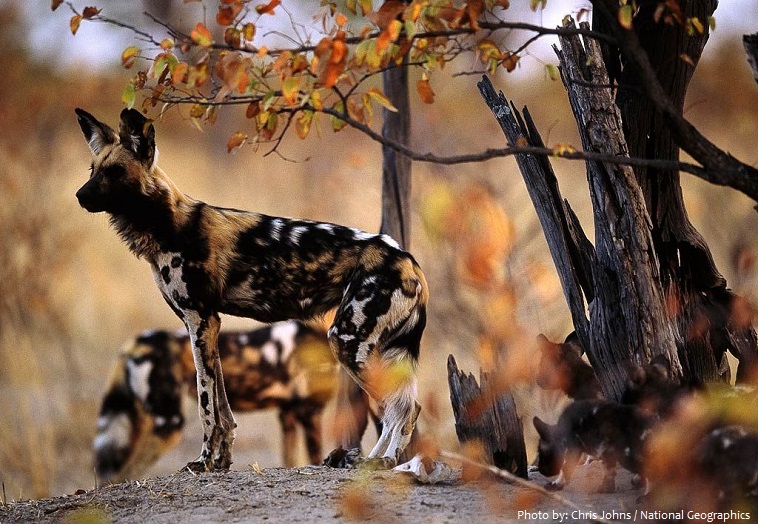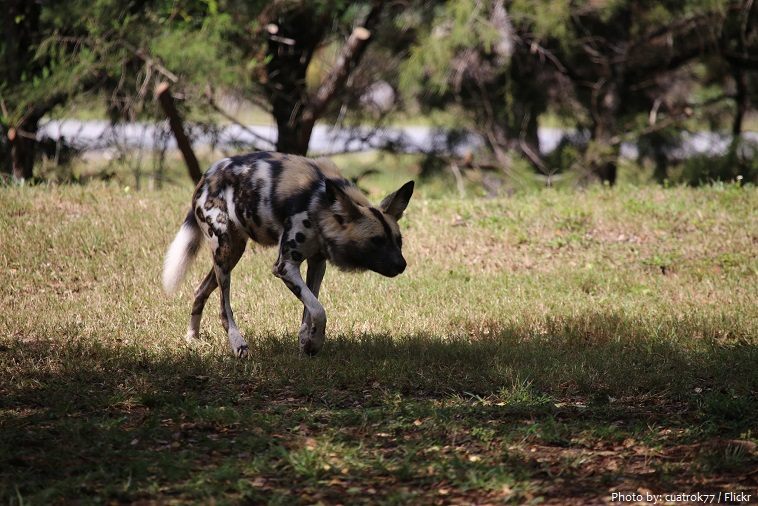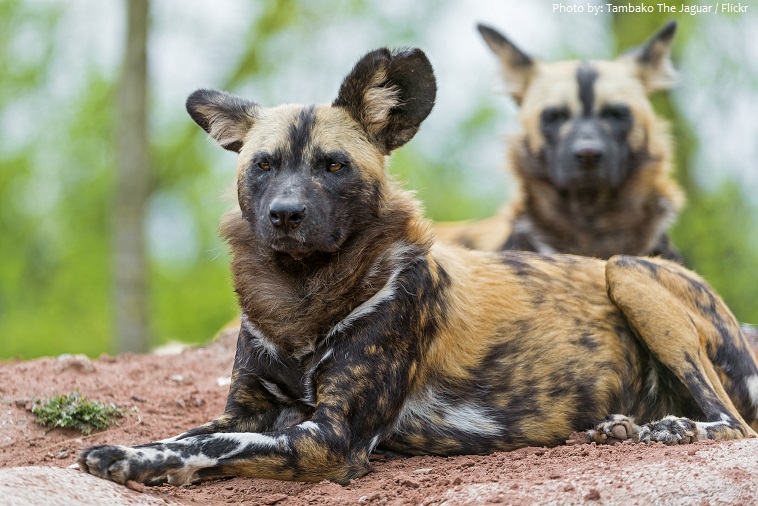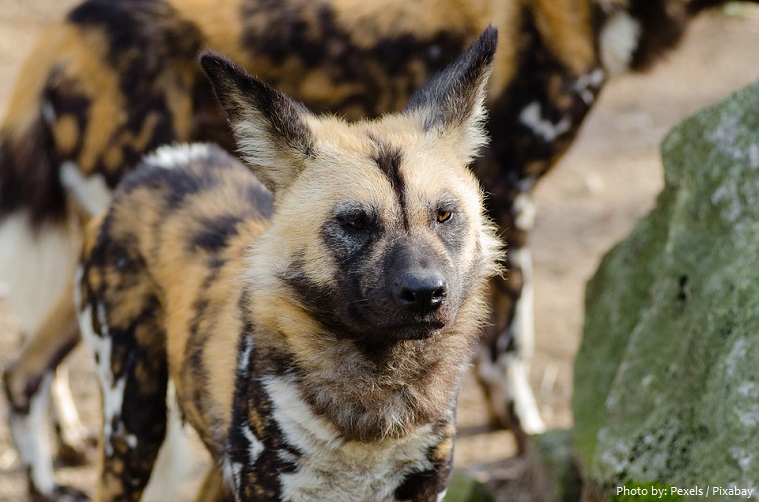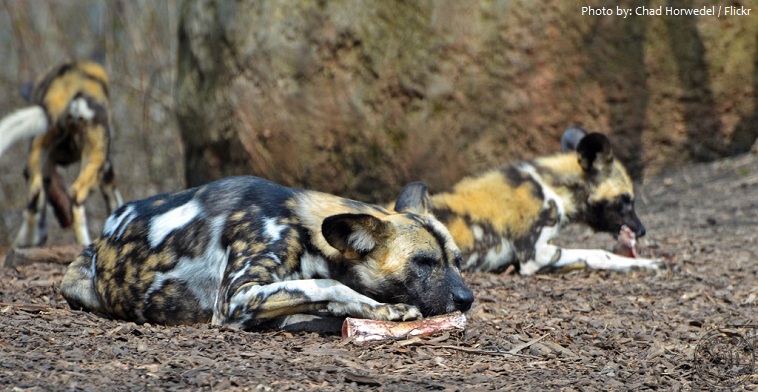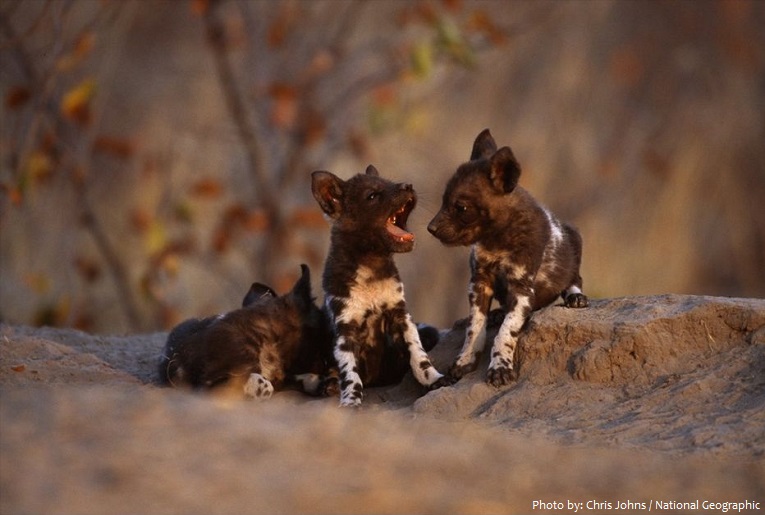The African wild dog (Lycaon pictus) is a member of the dog family (Canidae).
It is also known as the painted hunting dog, painted wolf, African hunting dog or African painted dog.
African wild dogs are native to sub-Saharan Africa.
Today they are found in Namibia, Botswana, Mozambique, parts of Zimbabwe, Swaziland, and the Transvaal.
Their main habitats are the open plains and savannas; painted dogs can also live and thrive in thicker bush and forest areas.
The lifespan of the African wild dog is about 10 years in the wild and up to 13 years in captivity.
The African wild dog is the bulkiest and most solidly built of African canids.
The species stands from 60 to 75 cm (24 to 30 in) in shoulder height, and weighs from 20 to 30 kg (44 to 55 lb).
They have large, rounded ears, a thin body, and long and muscular legs.
The fur appears to be painted with brown, red, black, yellow and white areas. The pattern of colors is different on each animals coat, much like the stripes of zebras.
The African wild dog differs from the rest of the members of the dog family in having only four toes on each foot.
African wild dogs form incredibly strong social bonds with one another and are highly intelligent animals.
Their packs are usually dominated by a monogamous breeding pair – an alpha male and alpha female.
African wild dogs packs size usually range from 15 to 60 or more.
They communicate within the pack by making high-pitched vocalizations or squeaks, which sound like a tennis shoe rubbing on a gymnasium floor! If a dog gets lost or separated from the group, it makes a sound, like a bell, called a “hoo” call. They can also signal pack mates by moving their very large ears to show what direction to go or what to do. Unlike wolves and domestic dogs, African painted dogs do not howl.
African hunting dogs are primarily diurnal, hunting in the morning and early evening. They will hunt at night if there is a bright moon.
These animals are cooperative hunters, they hunt in packs led by the alpha male. African wild dog uses sight, not smell to find prey. Once they locate prey they begin to chase it. The chase can last for several kilometers and reach speeds up to 55 km/h (34 mph).
The dogs chase the prey until it tires, and at times they will disembowel the prey while it is still running. Once the prey tires they tear it to pieces. African hunting dogs tolerate scavengers at their kills, except for spotted hyenas. They drive off hyenas, sometimes injuring or killing them.
In East Africa, its most common prey is Thomson’s gazelle, while in Central and Southern Africa, it targets impala, reedbuck, kob, lechwe and springbok.
African hunting dogs are not territorial animals. Their home ranges can vary in size from 200 to 2,000 square kilometers (77 to 770 square miles).
Constant wanderers, painted dogs rarely stay in one place more than a day or two.
A painted dog female can have up to 21 pups in one litter, more than any other dog species. However, the average number of young per litter is about 10; gestation periods of about 60 and 80 days have been noted.
It has been recorded that an adult painted dog will look for days for a lost pup or juvenile, calling out with a special vocalization and listening for a reply to bring the lost dog back to the pack.
The African Wild Dog is currently the second most endangered canid in Africa after the Ethiopian Wolf, and the most endangered carnivore in South Africa.
Although not as prominent in African folklore or culture as other African carnivores, it has been respected
in several hunter-gatherer societies, particularly those of the predynastic Egyptians and the San people.
The oldest African wild dog fossil dates back to 200,000 years ago and was found in HaYonim Cave, Israel.
The IUCN Red List of Threatened Species classifies the African wild dog as endangered.
African wild dogs are frequently mistaken as hyenas.
